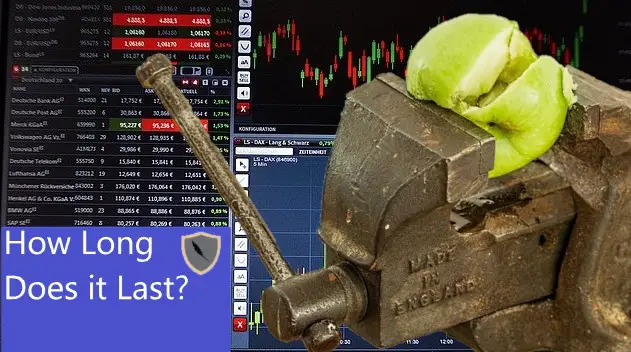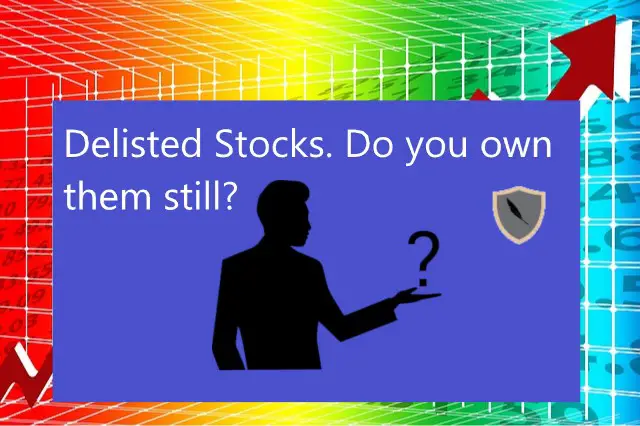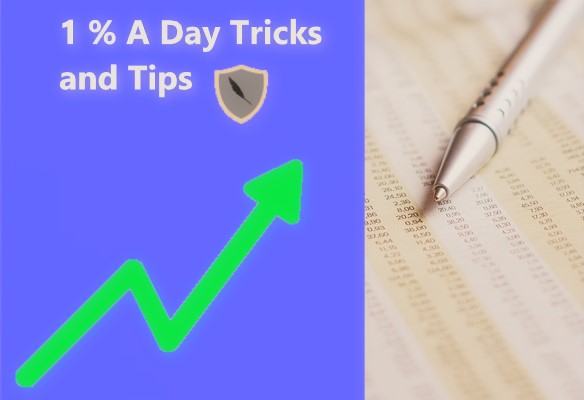We have all seen it, the stock you were trading explodes after the market closes. Time and time again investors/traders don’t know how to exploit these movements so that they can make huge lump sums of money.
In the above image we can see just how far a stock can move during after hours. If you got into ACIU before the explosion when you woke up you would have nearly doubled your money!
Here at Chronohistoria I teach people how to generate above normal returns in the stock market. I publish articles on stock research and tips/tricks of the trade. Feel free to sign up for the free newsletter if you want to remain up to date on everything stock market related.
Without wasting any time let’s jump right into the article trading stocks after hours: how to do it properly and make money.
What Is After Hours Trading?
Simply put after hours trading is any trading that happens after the official market closes.
Regular trading hours are from 9:30 am EST to 4:00 PM EST. After hours trading occurs anytime outside that window, either before or after. That means that a stock can be traded as early as 6:00 am and as late as 8-10 PM. (Source)
Unlike normal trading hours, after market hours are operated by a separate trading computer system. This system does not have a formal name yet, but most investors simply call it the “electronic markets.”
These electronic markets only interface one buyer and one seller at a time. There is no middle man market, only direct sales and buys of an underlying asset. (Source)
Some of the larger ETFs have actually started going 24/5 on select brokers. Eventually this is going to be the goal of all markets, to have nonstop trading. This won’t take effect however until the mid 2030’s and will revolutionize the market. (Source)
Risks Of After Hours Trading?
Historically, after hours trading up until the 1950’s was only used by institutional investors and high net worth individuals. This changed in the mid 90’s when more and more firms started offering after hours to retail investors.
This change happened because of the revolution in the markets caused by digital trading. No longer did you need to have a broker representing you on the floor of the exchange, now you could invest from the comfort of your home.
There are some risks that only after hours would present to the average retail trader. Here are the top 3 risks to after hours trading.
Risk 1: Limited Quotes
For many retail investors out there when you buy or sell stocks after hours you will only see available pricing quotes set by your broker within their own ECN (Electronic Communications Network). (Source)
Not all brokers have their ECN system set up to allow trading of stocks between other broker’s after hours networks. You need to ask your broker if you can execute trades on another broker’s ECN.
This limited exposure to other brokers after hours trading networks could mean you sell or buy a position at a significantly higher rate. Once the market opens back up your price will autocorrect to the standard rate, which could cost you significantly.
Risk 2: Liquidity
Liquidity simply refers to an investor/trader’s ability to liquidate their position back into cash.
Since after hours trading has such a low volume compared to the normal trading day liquidity is a huge concern. Sometimes the entire after hours trading session might only see 3000-5000 shares sold. If you’re not careful your order might get filled at a significantly higher/lower amount or not filled at all. (Source)
This is because there simply is not enough volume to satisfy your order size. Make sure you look at the total volume being bought and sold in the after hours session to see if you’re going to run into liquidity concerns.
Risk 3: Large Spreads On The Quote
As the above image would indicate, the spread is simply the gap in pricing between the bid and ask prices.
When you’re trading after hours the spread is significantly wider than normal. This is actually a decent way you can make a little bit of money each day but it should be treated carefully.
Since the volume on the stock is so much lower during after hours the spread will eventually widen up. Stocks with high volume have a very narrow spread while stocks with low volume have much larger spread windows.
The spread on an after hours stock could widen so much that it would be nearly impossible to open a position without a loss. Because of this you need to be careful about how much you buy or sell during after hours. Look for the volume to determine how large of a position you can take.
If interested in how you can benefit from this spread I recommend reading the article “An Empirical Investigation of ECNs and the Dealer Market: Order Imbalances and Spread Patterns’ ‘ by Robin K. Chou et al. (Source)
How To Trade After Hours
To trade stocks after hours you simply need to enter in a limit order and select EXT in the time in force (TIF) window. By default brokers will have the DAY time to enforce selected. This means that the brokers will only enforce your order during the day, or during the normal market hours.
When you select the EXT TIF then you will have to enter in a limit order. That’s because the extended hours trading sessions only take limit orders to prevent huge swings in the underlying assets price.
As we can see from the above image there are four selectable time enforcement options on a potential order. Each one tells the broker to do a certain action by a certain time, or time in force (TIF).
The four time in force options are as follows.
TIF Option 1: DAY
This TIF simply tells the broker to execute your trade only during that trading day. If you put a limit order in with a TIF of DAY then your order will only be good for that day. At 4:00 PM that day your order will be canceled.
TIF Option 2: GTC
GTC stands for Good Till Cancelled. As the name implies your order will be good until it is cancelled meaning that your order will not expire at the end of day.
If you place a limit order on a position and it does not get filled at 4:00 pm Est then it will role over every day until it is filled. Using the GTC TIF will allow you to place an order on a security and just walk away, that order will be good forever.
TIF Option 3: EXT
EXT stands for Extended Hours Trading. This is what you want in order to execute orders during extended hours.
Just like the DAY option EXT orders placed at 4:00 pm will expire at 9:30 am the next day. This is because at this point the normal market orders start up and you will have to enter a position with a DAY TIF.
TIF Option 4: GTC_EXT
GTC_EXT stands for Good Till Canceled Extended Trading Hours. Much like the normal GTC TIF order this order will stick around until it is filled, but only during extended hours trading sessions.
These TIF orders are rare as most people will simply fill their order the next day. However some institutional investors and private wealth funds will set up order sessions between buyers and sellers on their own to beat the market. That’s where GTC_EXT comes in. As a normal retail investor don’t worry about this TIF.
How To Trade After Hours Properly To Make Money
Now that we know what after hours trading is and how to execute an order let’s look at how we can use this new tool to make money.
Typically for a retail investor there is one way to consistently make money from after hours trading. That is to take a position at the end of the day when a stock is at its intraday high or low. During the after hours trading retail investors will chase the stock or sell it into the increasing spread and thus drive the price much higher or lower.
This after hours trading strategy works for two reasons. First, during extended hours liquidity and thus the spread increases. Second, during extended hours retail investors typically chase a stock and cause it to pump to new highs, which you can sell into.
Let’s discuss this strategy so that you can profit and make money.
Extended Hours Trading Strategy: Take A Position At EOD During Intraday Highs or Lows.
When a stock is trading towards its highs for the day at the end of the day typically that means that it is going to continue going upwards after hours. This only happens however when retail investors are trading the stock.
In order to determine if this strategy is going to work for your stock you need to look at volume. Is the day volume unusually high over its 30 day average standard? If so then chances are you have a lot of retail traders buying and selling the underlying asset, which means that this strategy will work.
To check for the 30 day average volume either calculate yourself or check free online tools such as Yahoo Finance. (Source for TSLA)
In order to profit from this strategy what you are going to do is take a position near the EOD (end of day, 4:00 pm Est) with the idea of selling into the after hours pump. When done properly you will make between 6-15% on top of the day gains.
The reason this strategy works is because retail traders will buy the stock in the after hours driving the price up at an alarming rate. The reason this price goes up so fast is because there is less volume/liquidity in the after hours. As such it takes less money to move the stock, which means retail traders have a more pronounced effect.
Retail traders tend to buy in the after market hours. This means that your selected stock will trend upwards at an alarming rate. You will sell into this uptrend to milk an extra percentage on your day gains.
Conclusion:
There you have it: trading stocks after hours: How to do it properly and make money. Most people don’t really understand how after hours trading works, they just see the stock moving and think that they can get in on the action.
Unfortunately for most retail traders they are not familiar with the concepts as to why exactly a stock moves during the after hours trading market. Because they don’t understand the reason why a stock will move they often fall victim to liquidity traps or FOMO’ing into a higher moving stock.
The good news for you is that now that you know how after hours trading works you can make money off it. Just be careful and make sure you understand the risks so that you don’t fall into liquidity traps.
Here at ChronoHistoria I teach people how to generate above normal market returns. I have a free newsletter that I use to keep people updated on everything that is happening in the market. Feel free to sign up if you want to remain up to date.
Further, you can check out some of the other articles below.
-
How Long Does a Short Squeeze Last? (3 Answers)

What is the time frame for you short squeeze? Well here is everything you will ever need to know to determine how long it will last.
-
Why You Still Own a Stock After It’s Delisted and How to Sell It

Do you still own a stock after its delisted? How do you sell it? Don’t worry the stock is still worth money and here is how to sell.
-
Can You Make 1% A Day in the Stock Market? (3 Steps)

Making 1% a day in the stock market is hard but defiantly doable. Here are 3 simple steps to helping you achieve this return.
Until next time, I wish you the best of luck in your investing journey.
Sincerely,


